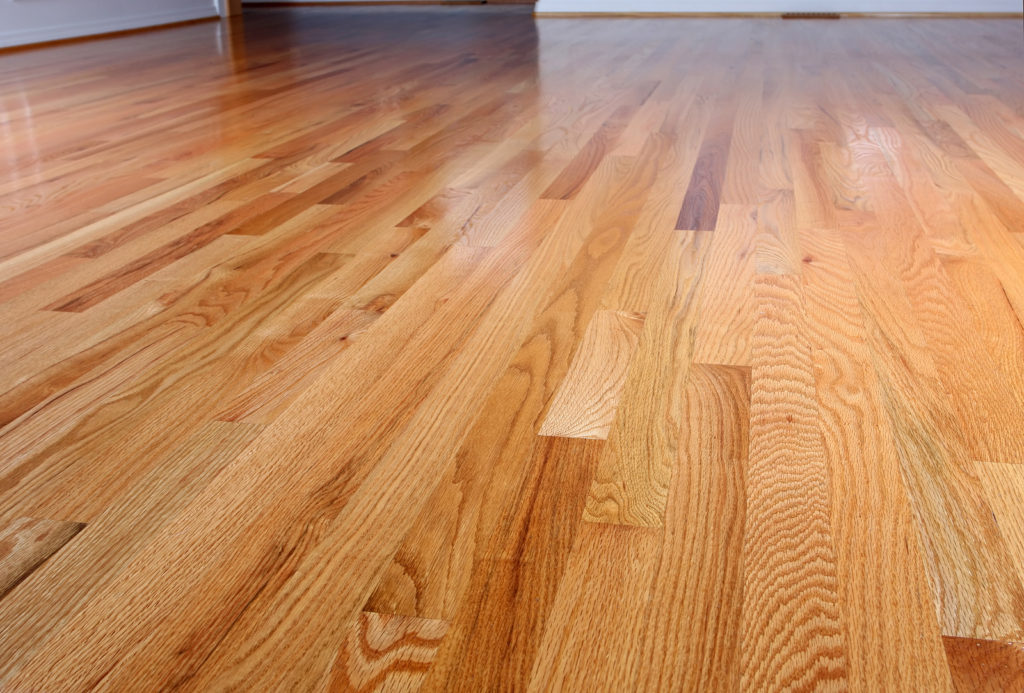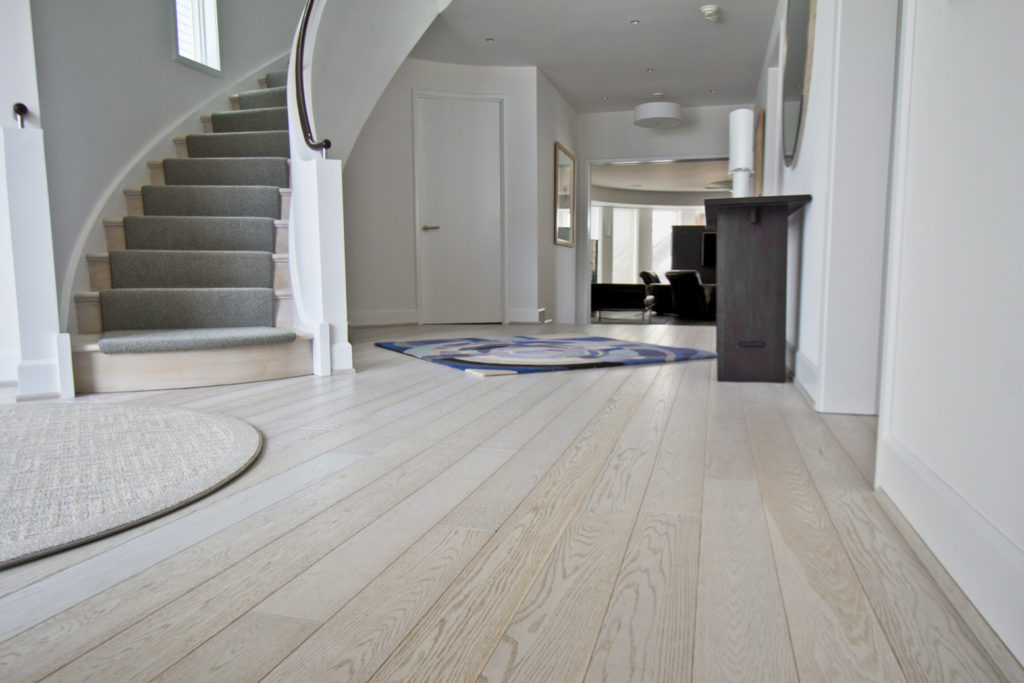
Here at Martin Allen – we know our wood floors.
From the rich and deep cherry and mahogany parquets to the light and airy beech timber or solid oak – you could count the number of tree species we haven’t worked with on the fingers of one hand.
Not much can go by regarding the wood’s quality and sustainability.
Yet, few clients share the same knowledge and hands-on experience when handling wood.
If you’re looking to buy a new property or want to breathe new life into your home, hardwood floors might seem the perfect choice.
Meanwhile, hardwood, in general, is a high-quality, durable option for any home. Certain wood species might work better for your particular property.
Knowing how difficult it can be to tell the grade and quality of wood by looking at it, we’ve decided to share some inside industry information with our clients.
We’ve created a short series of articles written with our customers (former, current, and future) in mind. These articles introduce you to the three most common hardwoods in use today: mahogany, oak, and walnut.
This article will cover oak, one of the most popular and commonly used hardwoods.
The Incredibly Diverse Genus of Oak: A Cornerstone of British Woodlands and Global Forestry
Oak trees belong to the Quercus genus of the beech family (Fagaceae) and are iconic symbols of strength and longevity across the northern hemisphere. With over 600 extant species, the oak genus showcases remarkable diversity in form, size, and ecological adaptations. This incredible variety has made oak vital to ecosystems, economies, and cultures worldwide.
In the United Kingdom, oak is special in natural heritage and industry. Two native species dominate British landscapes: the English oak (Quercus robur) and the sessile oak (Quercus petraea). These majestic trees have shaped the country’s forests for millennia, with some specimens living for over 1,000 years. According to the Woodland Trust, oak woodlands cover approximately 222,000 hectares in Great Britain, accounting for about 9% of the country’s total woodland area.
Oak trees are renowned for their density, averaging around 0.75 g/cm³, contributing to their durability and versatility in woodworking. This density, combined with tannins – natural compounds that protect against insects and fungal infections – has made oak a preferred choice for various applications throughout history.
The importance of oak in British maritime history cannot be overstated. During the age of sail, a single large warship required up to 6,000 oak trees for its construction. The phrase “Heart of Oak” in the Royal Navy’s official march reflects the material’s significance in naval architecture.
In modern times, oak has maintained its popularity in construction and interior design. The UK hardwood flooring market, which is largely oak-dominated, was valued at approximately £12.18 billion in 2023.
Sustainable harvesting practices have ensured a steady supply of oak timber, with the broad dimensions of oak logs making them ideal for producing wide planks favoured in contemporary flooring designs.
The adaptability of oak to various woodworking techniques further cements its status as a preferred material. From traditional joinery methods like mortise and tenon to modern techniques such as floating tenons, oak’s workability makes it suitable for skilled craftsmen and DIY enthusiasts. Its ability to accept a wide range of finishes – including paints, stains, and varnishes – adds to its versatility in furniture making and interior decoration.
The oak’s story is one of resilience, adaptability, and enduring value – a testament to nature’s ingenuity and humanity’s ability to harness its gifts responsibly.
Oak Flooring
Oak is considered a medium-hard wood, ranking in the middle of the Janka scale with a hardness range of 1260 to 1360, depending on the specific tree used. This hardness makes oak an excellent choice for flooring due to its durability and resistance to wear.
Being in the middle of the Janka scale also makes oak relatively easy to work with. It’s easy to cut, trim, sand, and install, making oak hardwood floors a practical choice for both professionals and DIY enthusiasts. Additionally, oak floors are simple to maintain.
Oak’s particular density and surface texture make it perfect for staining. Oak timber is considered porous, which means it can absorb staining agents well, providing a smooth, uniform colour across its surface. This characteristic allows for a wide range of aesthetic options.
While these are the general characteristics of oak timber, it’s important to note that not all oak subspecies are the same. Their differences can range from subtle aesthetic variations to more significant structural differences that might affect their suitability for particular rooms or properties.
The two most commonly used types of oak are white and red oak. Differentiating between these subspecies can be challenging, especially for the untrained eye, as the board’s surface and grain are similar. However, these two species have distinct structural differences that can impact their performance in various applications.
Understanding these variations is crucial when selecting the right type of oak for your specific needs, ensuring you choose the best option for your flooring project.
Red Oak vs White Oak
Contrary to popular belief, white oak boards tend to be darker in colour than red oak boards. White oak boards are much deeper and ashy than red oak boards, which are a light beige with subtle pinkish or reddish hues.
A closer look at the two boards reveals yet another subtle difference, this time considering the rays of the tree – the little brown streaks running along the grain of the boards.
White oak boards feature especially long rays, often exceeding 2cm. On the other hand, red oak tends to have much shorter rays, rarely longer than a centimetre. This is the most common way to tell the two species apart, but it can be tricky with sanded or stained boards, as the processes tend to smudge and cover the rays.

Red Oak flooring
The rays of the board affect only its appearance, not its structure or durability.
However, the end grain of the board affects its structure.
Red oak’s growth rings are much less dense than white oak’s, meaning the red oak’s structure is much more porous. A good sanding job and a durable lacquer finish should be enough to seal the red oak boards.
However, white oak pores are filled with tyloses, which protect the wood from water and rot. This creates a watertight seal in the oak boards, making them suitable for all kinds of vessels and hardwood floors in damp or high-traffic areas.
The staining of these two types of oak is also slightly different. Standard white oak will react to any stain, from light finishes to the deepest, almost black stains.
Red oak is also great at soaking up stains, although any finish you decide will have a slightly pinkish hue. This is why red oak might be a better choice if you want your floors to emulate the rich, chocolatey colours of mahogany or cherry trees.

White Oak flooring
Regarding plank styles, oak boards are available in standard solid and engineered varieties, with a broad range of widths and lengths. If you’re unsure of plank dimensions that suit your home best, call us at 01162 165 107 for a free on-site quote and advice.
Knowing the characteristics of the two most commonly used oak species is important for every homeowner considering installing this versatile and durable hardwood. If you’re looking for a straightforward and stylish solution for your home, oak is a hardwood to consider.
- By: Andjela Jovetic
- Tags: Oak
- Category: Wood Flooring, Wood Species
- 0 comment



Leave a Reply